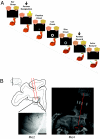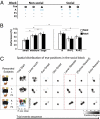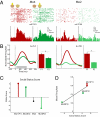Modulation of value representation by social context in the primate orbitofrontal cortex
- PMID: 22308343
- PMCID: PMC3277550
- DOI: 10.1073/pnas.1111715109
Modulation of value representation by social context in the primate orbitofrontal cortex
Erratum in
- Proc Natl Acad Sci U S A. 2012 Mar 6;109(10):4020
Abstract
Primates depend for their survival on their ability to understand their social environment, and their behavior is often shaped by social circumstances. We report that the orbitofrontal cortex, a brain region involved in motivation and reward, is tuned to social information. Macaque monkeys worked to collect rewards for themselves and two monkey partners. Behaviorally, monkeys discriminated between cues signaling large and small [corrected] rewards, and between cues signaling rewards to self only and reward to both self and another monkey, with a preference for the former over the latter in both instances. Single neurons recorded during this task encoded the meaning of visual cues that predicted the magnitude of future rewards, as well as the motivational value of rewards obtained in a social context. Furthermore, neuronal activity was found to track momentary social preferences and partner's identity and social rank. The orbitofrontal cortex thus contains key neuronal mechanisms for the evaluation of social information.
Conflict of interest statement
The authors declare no conflict of interest.
Figures





References
Publication types
MeSH terms
LinkOut - more resources
Full Text Sources
Other Literature Sources

